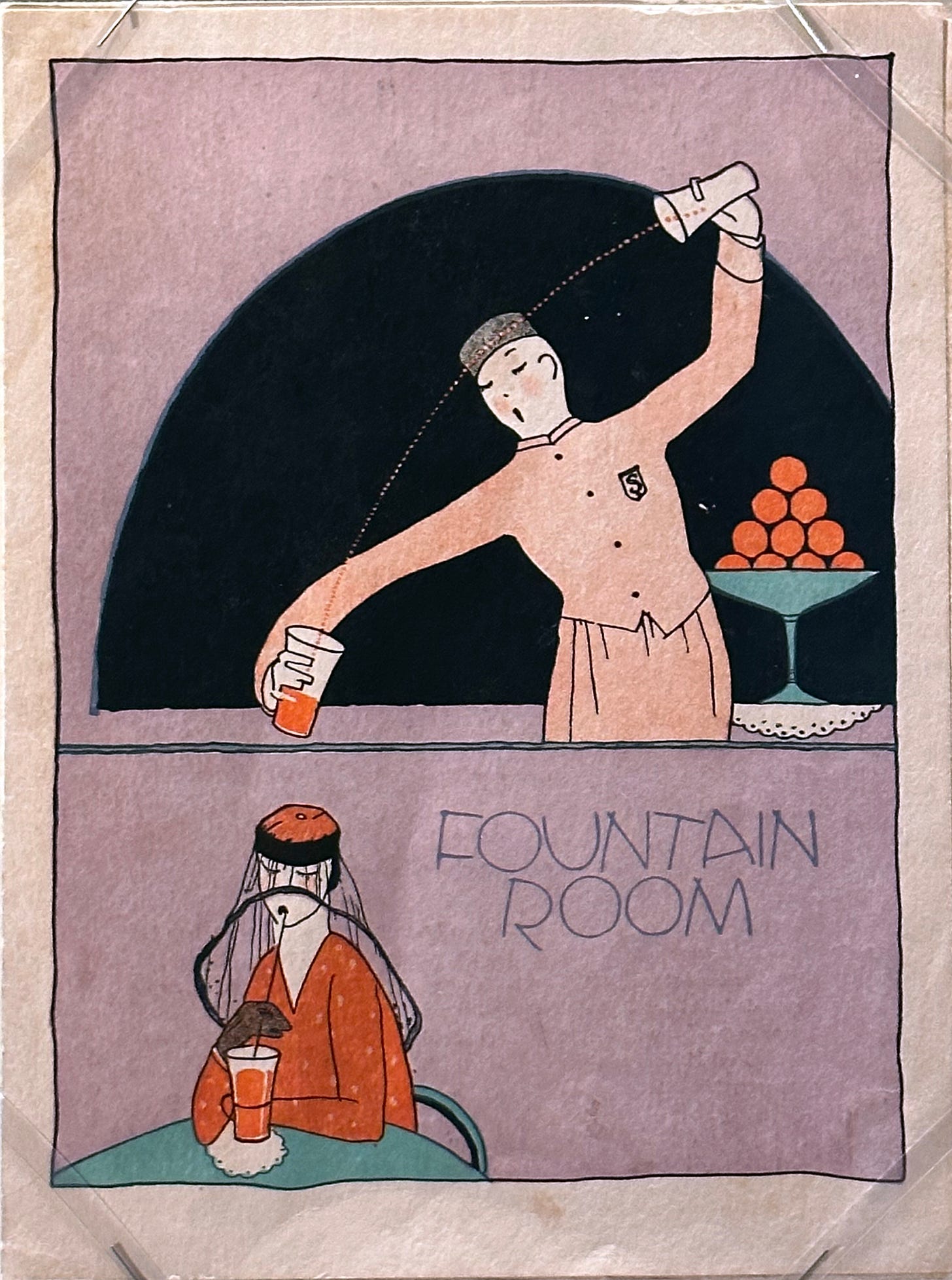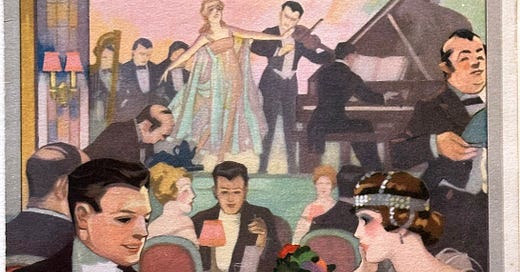With this weekend a major American holiday, I thought I would write a little bit about an exhibition now on at the Grolier Club in New York, "A Century of Dining Out: The American Story in Menus, 1841-1941." The Grolier Club is America’s oldest and largest society for bibliophiles and enthusiasts in the graphic arts; founded in 1884, the Club’s objective is to promote “the study, collecting, and appreciation of books and works on paper.”

All 225 menus in this exhibition come from the collection of Henry Voigt, who is a Maryland-based collector of ephemera and “historian of American culinary and social customs.” As menus first came into general use in the United States in the 1840s, Voigt starts his story there. Charting the first hundred years of menu use in American society, the ones on view range “from restaurants and hotels to Mississippi steamboats, utopian communities, and grand estates.” What becomes most clear while viewing them is just how much history is told through them; this isn’t just a timeline of menu design or a history of food—it is social history, cultural history, political history and war history, a history of technology and agriculture, immigration and travel history, literary and architectural history, women’s history, even natural history (when taking in how many wild animals became near-extinct due to white men’s banquets). There is little American history from those hundred years that these menus aren’t in conversation with; revealing a nation's hopes, dreams, proprieties, and fads, in equal measure.
“Menus are minor, transient documents that tell us how people have eaten out over time. They transport us back to the everyday life of the past—whether to a lavish banquet in the Gilded Age or a food-relief eatery during the Great Depression. They aid our cultural memory by providing unwitting evidence, not only of what people were eating, but what else they were doing and with whom they were doing it; who they wanted to be; and what they valued.” - Henry Voigt
In his introduction to the exhibition’s catalogue, Voigt quotes from an essay by former State Librarian of California, Kevin Starr, that highlights the importance of restaurants as sites of history: “Restaurants have by and large not received their full measure of regard in the writing of American history, despite the fact that they are paradigms of place. To enter such establishments as . . . Keen's Steakhouse, the Old Homestead, and ‘21’ in Manhattan; . . . Antoine's [no. 149] and Galatoire's [no. 150] in New Orleans; . . . and the Musso & Frank Grill [no. 215] in Los Angeles—this is to encounter a density of ambiance and collective memory that is of the essence of history itself.” We access that sense of collective memory not only by entering renowned, hundred-year-old establishments but also by sifting through the ephemera of the past. Laid out in display cases, we aren’t able to feel the menus themselves but we can still get a sense of the weight and quality of the paper, imagine the feel of the engraving or embossing. Our eyes can linger over flora or fauna, dancing couples or buildings—soaking in and analysing the choice of decoration or its absence. All of these visual clues provide us with a sense of place and time before we even begin to read the list of dishes—themselves a veritable record of food fads and traditions.

Keep reading with a 7-day free trial
Subscribe to Sighs & Whispers to keep reading this post and get 7 days of free access to the full post archives.



